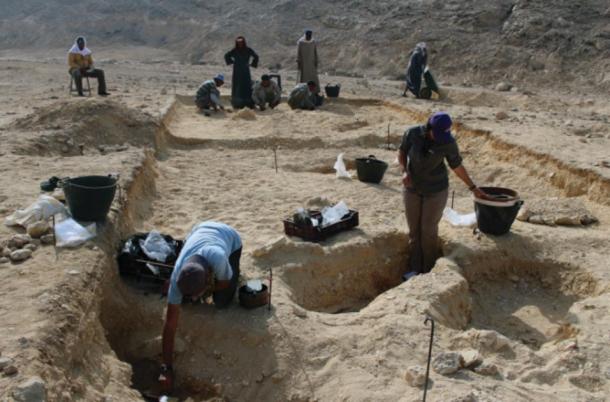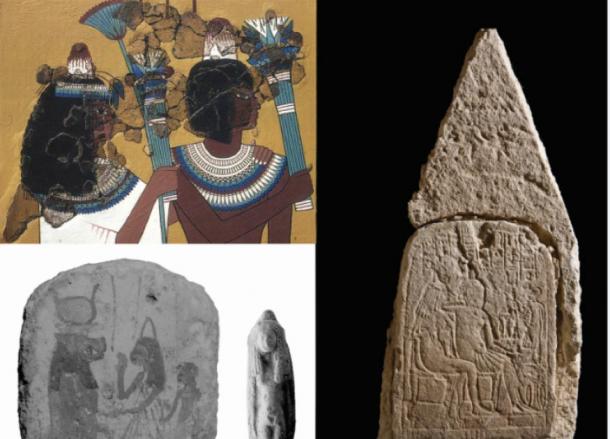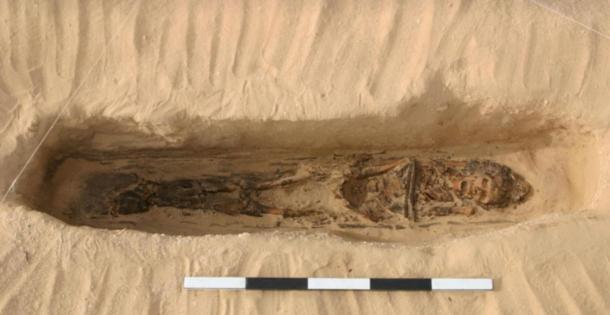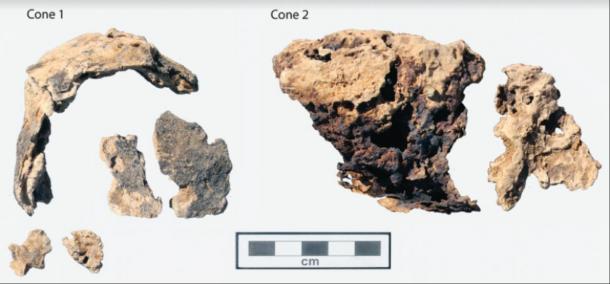Archaeologists have finally found ancient Egyptian wax head cones
Many men with cone-shaped headgear were depicted in ancient Egyptian paintings but no actual representations are identified for a long time. Now, an international team of archaeologists reports the discovery of the first actual head cones at the city of Amarna.
Pharaoh Akhenaten rendered Amarna and it was only 15 years occupied (1347 – 1332 BC). But despite this brief existence, the city contains thousands of graves, including those of many non-elites.
The Amarna Project archeologists collaborate with the Egyptian Ministry of Antiquities to investigate them, shedding light on the ordinary people of ancient Egypt.
Their discovery in 2010 was unexpected: a grave with a head cone. Another was found in 2015. This finally confirmed the objects actually existed, which some researchers had been skeptical of.
Wherever the reasons are unknown, these cones are included in the burials, the Amarna cones have provided the first opportunity to investigate an important ancient Egyptian tradition that, until now, we weren’t even sure existed.

Ancient Egyptian art frequently depicted people wearing a cone-shaped headgear. For around 1,500 years (c. 1549-30 BC), paintings and carvings showed individuals wearing cones on their heads at banquets, at worship, and in the afterlife.
Despite this abundance of visual evidence, however, archaeologists had never found an actual head cone. This lack of material evidence even prompted some researchers to suggest that the cones never existed and that they were instead purely symbolic, like the halos given to religious figures in Christian art.

Now, an international team of archaeologists publishing in the latest issue of Antiquity, report the discovery of two head cones from cemeteries at the ancient Egyptian city of Amarna, confirming for the first time the physical existence of this unusual headwear.
The head cones were discovered in the cemeteries at the city of Amarna (called Akhetaten by the ancient Egyptians). This city was built by the pharaoh Akhenaten as a home for the cult of the sun god Aten, whose exclusive worship Akhenaten promoted instead of traditional Egyptian polytheism.
The city was abandoned around a decade after the pharaoh’s death, meaning the settlement was occupied for only 15 years, from 1347 to 1332 BC. Despite this short occupation, the city is extensive, spanning several square kilometers and featuring thousands of graves.

The ruins of a pharaoh’s abandoned city attracted ancient looters, who ravaged all four cemeteries at the site. This left archaeologists with the difficult task of piecing together the disturbed burials.
Archaeologists from the Amarna Project, working with the Egyptian Ministry of Antiquities, have been exploring this wealth of evidence since 2005. These excavations are helping to fill in gaps in knowledge created by the rapid excavations during the early days of Egyptology. The work is especially important for helping us to understand the lives of ordinary Egyptians, beyond the ruling elite.
Amongst these individuals were two people buried with head cones. One was a female, aged 20-29 years old at death, whilst the other was a 15-20-year-old of indeterminate sex.

Archaeologists have long discussed the significance of head cones. Before this new discovery, some scholars argued that the cones did not exist as real objects but rather were symbols used in artistic representations. Others, however, suggested that they did exist but were made of materials that did not survive in the archaeological record. One popular hypothesis was that they were an unguent – pieces of fat or wax perfumed, perhaps with myrrh.
As the cone melted, the scent was released, with some ancient Egyptian literature suggesting that this process would purify the wearer.
The Amarna head cones were discovered in fragments, but archaeologists have been able to reconstruct their overall shape. Specialists were also able to use portable equipment to carry out several kinds of non-destructive spectroscopy on the cones.
This analysis reveals the cones were hollow and made of wax, most likely beeswax. However, contrary to expectations, there is little evidence they contained unguent.
Why the cones were included in these two burials is difficult to know. They may have been thought to purify the wearer, enhancing their spiritual powers to allow them to engage with the rituals and deities encountered in the afterlife. Another possibility is that they were connected with ideas of fertility and resurrection. Whatever their purpose and significance, the Amarna cones provide the first opportunity to investigate an important ancient Egyptian tradition that, until now, we weren’t even sure existed.






